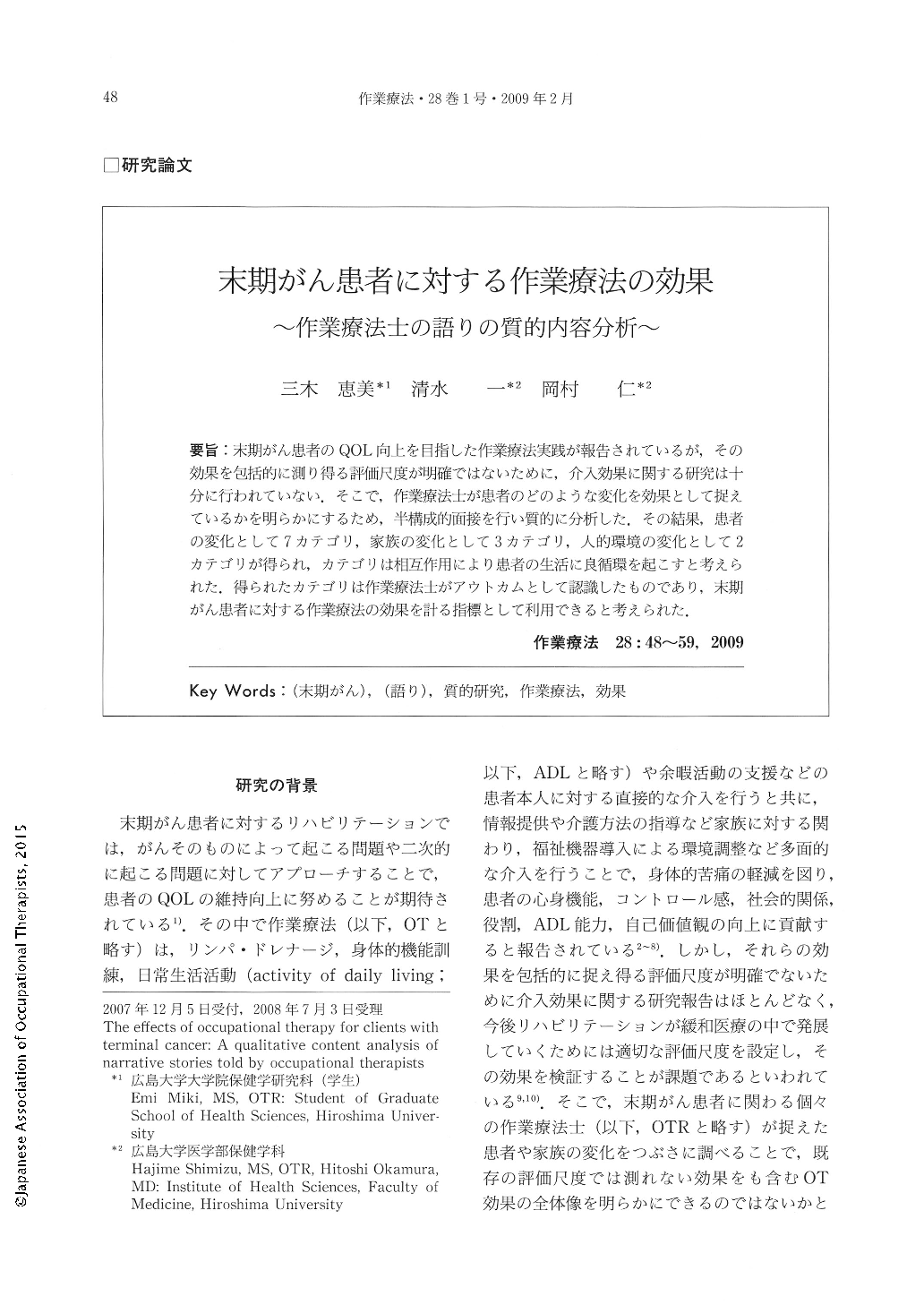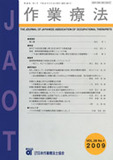Japanese
English
- 販売していません
- Abstract 文献概要
- 1ページ目 Look Inside
- 参考文献 Reference
- サイト内被引用 Cited by
要旨:末期がん患者のQOL向上を目指した作業療法実践が報告されているが,その効果を包括的に測り得る評価尺度が明確ではないために,介入効果に関する研究は十分に行われていない.そこで,作業療法士が患者のどのような変化を効果として捉えているかを明らかにするため,半構成的面接を行い質的に分析した.その結果,患者の変化として7カテゴリ,家族の変化として3カテゴリ,人的環境の変化として2カテゴリが得られ,カテゴリは相互作用により患者の生活に良循環を起こすと考えられた.得られたカテゴリは作業療法士がアウトカムとして認識したものであり,末期がん患者に対する作業療法の効果を計る指標として利用できると考えられた.
Despite many reports about occupational therapy interventions for improving QOL of clients with terminal cancer, few studies have analyzed the effects of interventions because of a lack of effective scales to measure the comprehensive effects. Therefore, we carried out semi-structured interviews in order to clarify the effectiveness of occupational therapy on the clients. As a result we found seven categories of the clients' changes, three categories of families' changes, and two categories of human environmental changes. These categories of changes interact with the daily lives of clients, creating a chain reaction of positive influences in a variety of areas. The categories were recognized as outcomes by occupational therapists, so they may be used as indicators to measure occupational therapy effects for clients with terminal cancer.

Copyright © 2009, Japanese Association of Occupational Therapists. All rights reserved.


